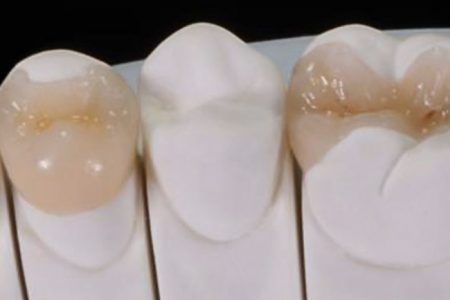Inlays
Aesthetics - Inlays

High-quality dental filling for medium or large defects
Dental fillings must meet certain health (biohealth) and esthetic requirements. Inlays fulfill both purposes perfectly. They are produced indirectly, i.e. not in the oral cavity. This makes it possible to customize them so that they reliably match your own tooth color and the shape of the defect on the tooth.
When are inlays useful?
As a filling for medium to large tooth defects
Inlays are used as fillings when there are medium to large defects in the tooth, caused by caries, for example. However, the defect should not be so large that a crown would be the better choice. For smaller fillings, a different filling material, such as composite, is usually more appropriate. Less tooth substance needs to be prepared than for an inlay. Patients who are allergic to other filling materials or wish to avoid them can also opt for inlays as a high-quality filling.
A popular material for this is disilicate ceramic. This is not only recommended due to its natural tooth color, but also because of its excellent material properties: ceramic is biocompatible and does not react with metals, which are often already present in the oral cavity in the form of fillings. As far as the lifespan of an inlay is concerned, they last an average of six to ten years. However, a significantly longer lifespan is very possible with good care. The inlay can then be easily replaced by the dentist.
How does the use of an inlay work?
In order for an inlay to be inserted, the corresponding area of the tooth must first be prepared by the dentist using a special grinding technique. This grinding prepares the tooth optimally for the material and shape of the inlay. The dentist then takes an impression of the defective tooth so that a precisely fitting inlay can be produced in the laboratory.
The ceramic inlay is then attached to the tooth structure using a special adhesive with an adhesive effect. This means that a microscopic bond is created through fine pores, which ensures that the inlay and tooth substance adhere firmly and reliably to each other. Generally, two sessions are necessary, as the inlay is produced in the dental laboratory in the meantime.
